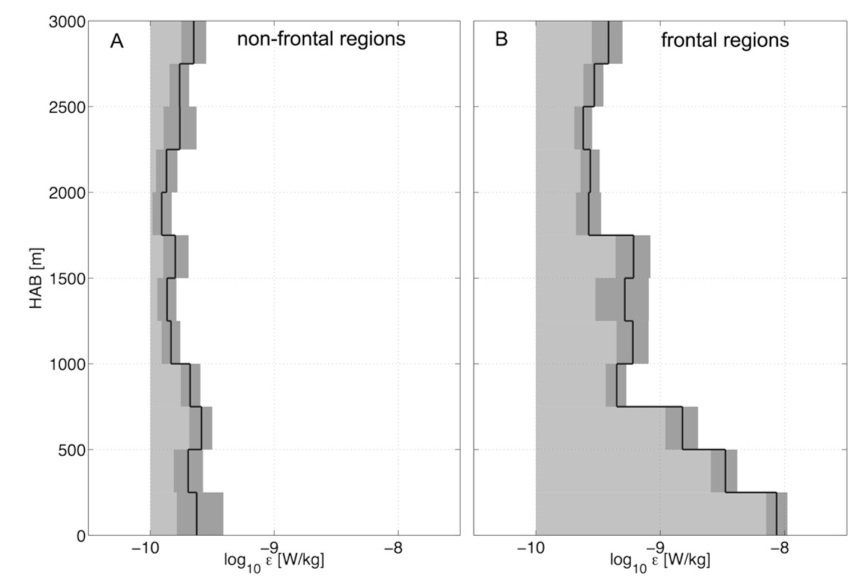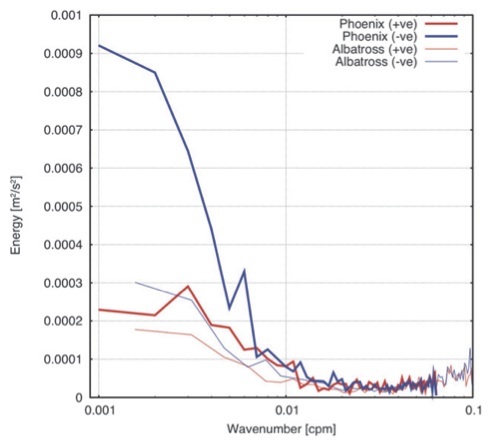work in progress
Internal lee waves
Low-frequency flow over topography may generate internal lee waves, which in turn may break some distance from the boundary and produce turbulent mixing. The mechanism provides one possible route to extract energy from the mesoscale, the decay process of which is surprisingly uncertain [Ferrari and Wunsch 2009]. Lee wave generation is likely to be particularly strong where near-bottom flows are large, such as in the Antarctic Circumpolar Current. The figure below shows data from Drake Passage collected as part of the DIMES experiment. Lee wave generation would be expected where bottom flow is strong, which tends to be in areas of strong fronts. In such areas turbulence is bottom intensified in a way that is reminiscent of that associated with internal tide generation. The suggestion is that here as well waves steadily dissipate as they propagte upwards, producing the observed pattern of dissipation. In addition to dissipation related to wave-wave interactions, these waves may break when they encounter critical levels associated with the mean sheared flow.
 |
 |
Figure 1: evidence of internal lee waves in the Southern Ocean, reproduced from St. Laurent et al 2012. Left panel shows average dissipation rate profiles as measured with a velocity microstructure profiler, in height above bottom (HAB) coordinates, from measurements that were taken in (right) and outside of (left) strong ACC fronts. Right panel shows vertical wavenumber spectra from the bottom 1000 m from two different lines. The thick blue line represents motions with a sense of rotation consistent with upward propagating internal waves.
Nikurashin and Ferrari [2011] use linear wave geneartion theory combined with modeled currents near the ocean bottom to consider the expected global pattern of internal lee wave generation (below). They find a global integrated power input of 0.2 TW. However, the same methodology applied to the DIMES region produces turbulent dissipation rate profiles that are an order of magnitude larger than the obsevations shown above. Our temporary conclusion is that while these patterns are intuiging, the generation mechanism is not yet well enough understood to implement paramterizations of this effect. Ongoing CPT work is investigating these issues.
 |
Estimated energy flux going into
internal lee waves by mesoscale flow over topography, in log_10
(mW/m^2). The energy flux was computed by applying linear theory
to near-bottom currents from a global circulation model.
Reproduced from Nikurashin and Ferrari 2011. |
 |
We gratefully acknowledge funding from
NSF and NOAA |
 |